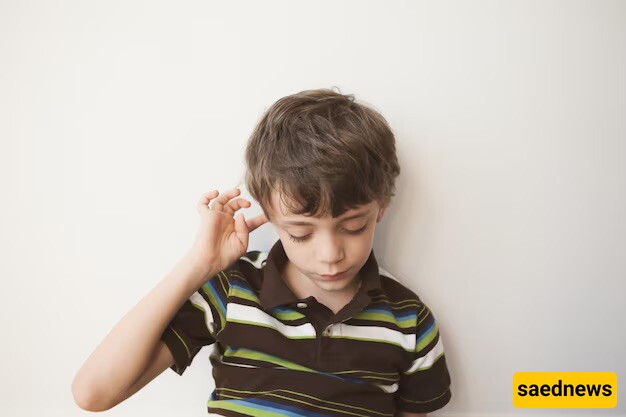To determine whether an infant's earache is normal or caused by an infection, check the color of their stool. If it is green, the earache is likely normal and not a cause for concern.

According to the Family Magazine Service of Saed News, ear pain in newborns is common unless it is due to an infection or a cold. Read on to learn more about infant earaches.

One of the most common signs of an earache in infants is excessive crying and restlessness, especially during the night. While crying and fussiness can have many causes, ear pain is one possible reason. A loving mother can often distinguish the type of crying and nighttime restlessness her baby exhibits. In some cases, consulting an experienced doctor can help confirm the diagnosis.
An infant with ear pain will frequently reach for their ears, attempting to communicate their discomfort in a nonverbal way.
Infants experiencing ear pain may shake their heads from side to side and rub their ears against their pillow. This instinctive behavior may help reduce some of the pain.
Green stool in an infant is a key indicator that their earache is not due to an infection and is instead a natural occurrence.
If you gently press an infant’s ear and they cry or appear uncomfortable, this could be a sign of ear pain.
To relieve an infant’s earache, gently warm their ear. This method is effective and harmless.
Massage the outer ear and surrounding area with natural oils such as violet oil, black seed oil, walnut oil, or olive oil, or a combination of these.
Lightly soak a cotton ball in one of these oils and place it at the entrance of the ear (not deep inside). Ensure the cotton is only slightly oiled to prevent any liquid from entering the ear canal.
Once the baby calms down, remove the cotton ball. This method helps alleviate ear pain.
If an earache is caused by infection, inflammation, an untreated cold, or water entering the ear, the baby will also show signs of distress, such as:
Crying at night
Refusing to breastfeed or having a reduced appetite
High fever (if the infection worsens)
Yellow or white foul-smelling discharge from the ear
If left untreated, severe ear infections can lead to a perforated eardrum and hearing issues.
Vaccination: Ensure your baby receives all scheduled vaccinations.
Avoid Feeding While Lying Down: Prevent milk from entering the ear by keeping the baby in a semi-upright position while feeding.
Keep the Baby Away from Sick Individuals: Avoid exposing your infant to people with colds or the flu.
Breastfeeding: If possible, breastfeed for 6 to 12 months, as breast milk contains antibodies that help prevent infections.
Avoid Exposure to Smoke: Smoke can worsen ear pain and increase the risk of infections.
Maintain a Clean and Healthy Environment: Keep the baby in environments with minimal exposure to germs.
If you suspect an ear infection, take your baby to a doctor for proper treatment. If the infection is mild, honey may help as a natural remedy:
Warm natural honey slightly using indirect heat, such as steam from a kettle, but do not overheat it.
Lay the baby on their side and, using a matchstick (or a similar thin object), take a small amount of honey.
Hold the matchstick 2-3 cm above the ear and let a single drop fall into the ear canal.
Let the baby remain in that position for a few minutes while gently massaging the surrounding area.
This method may help reduce pain, infection, and fever.
Taking these preventive and treatment measures can help keep your infant safe from ear pain and infections.

